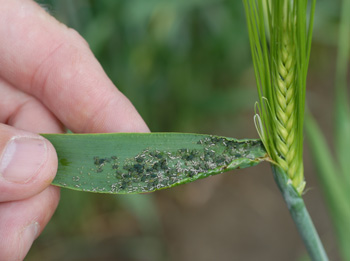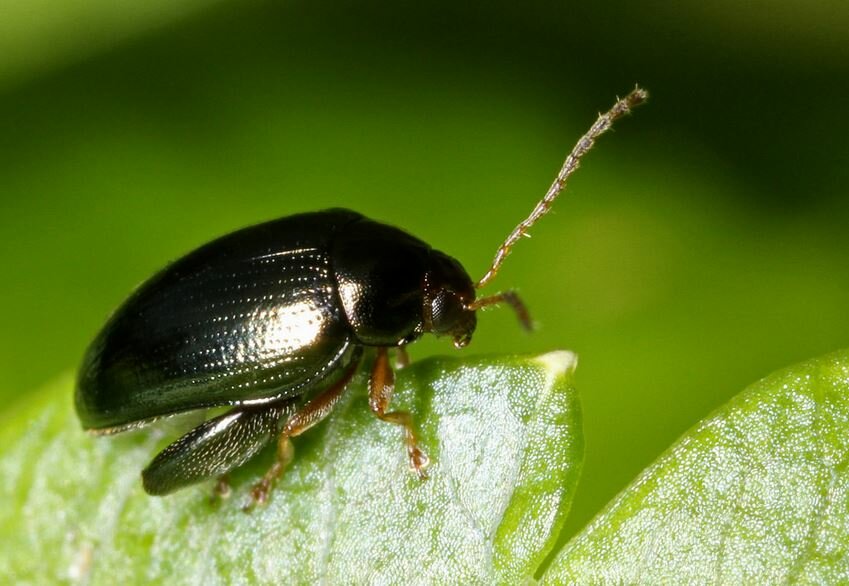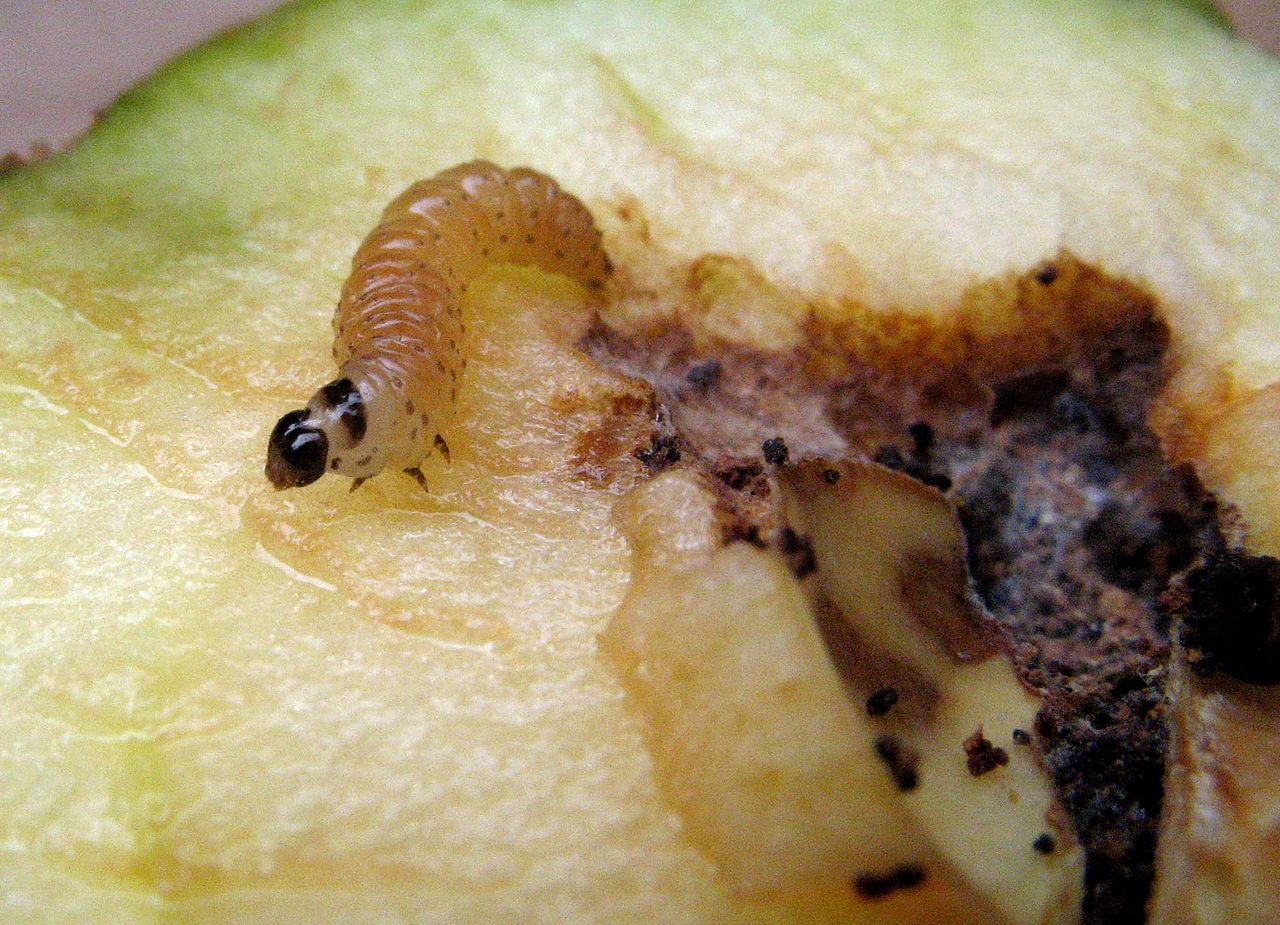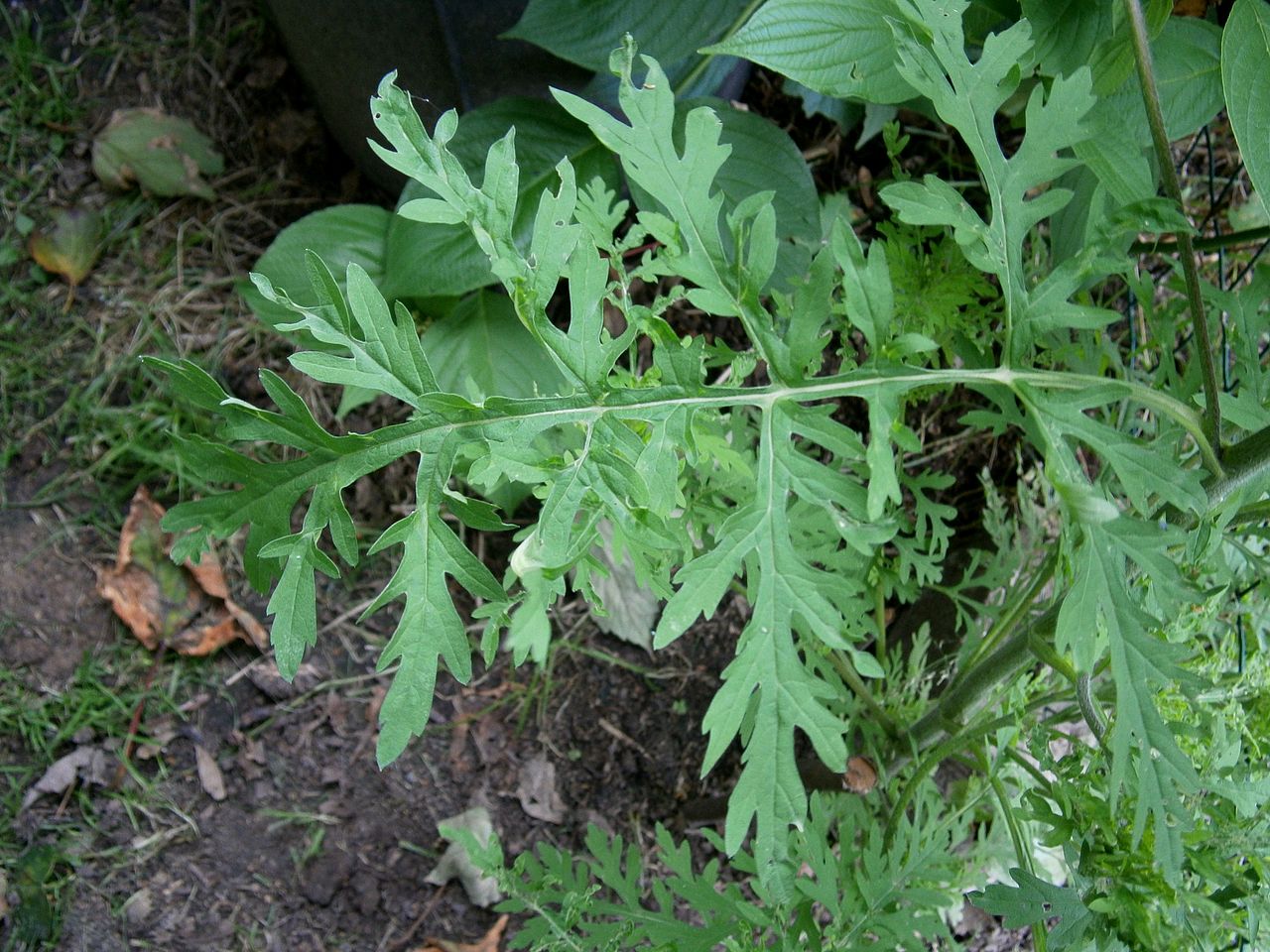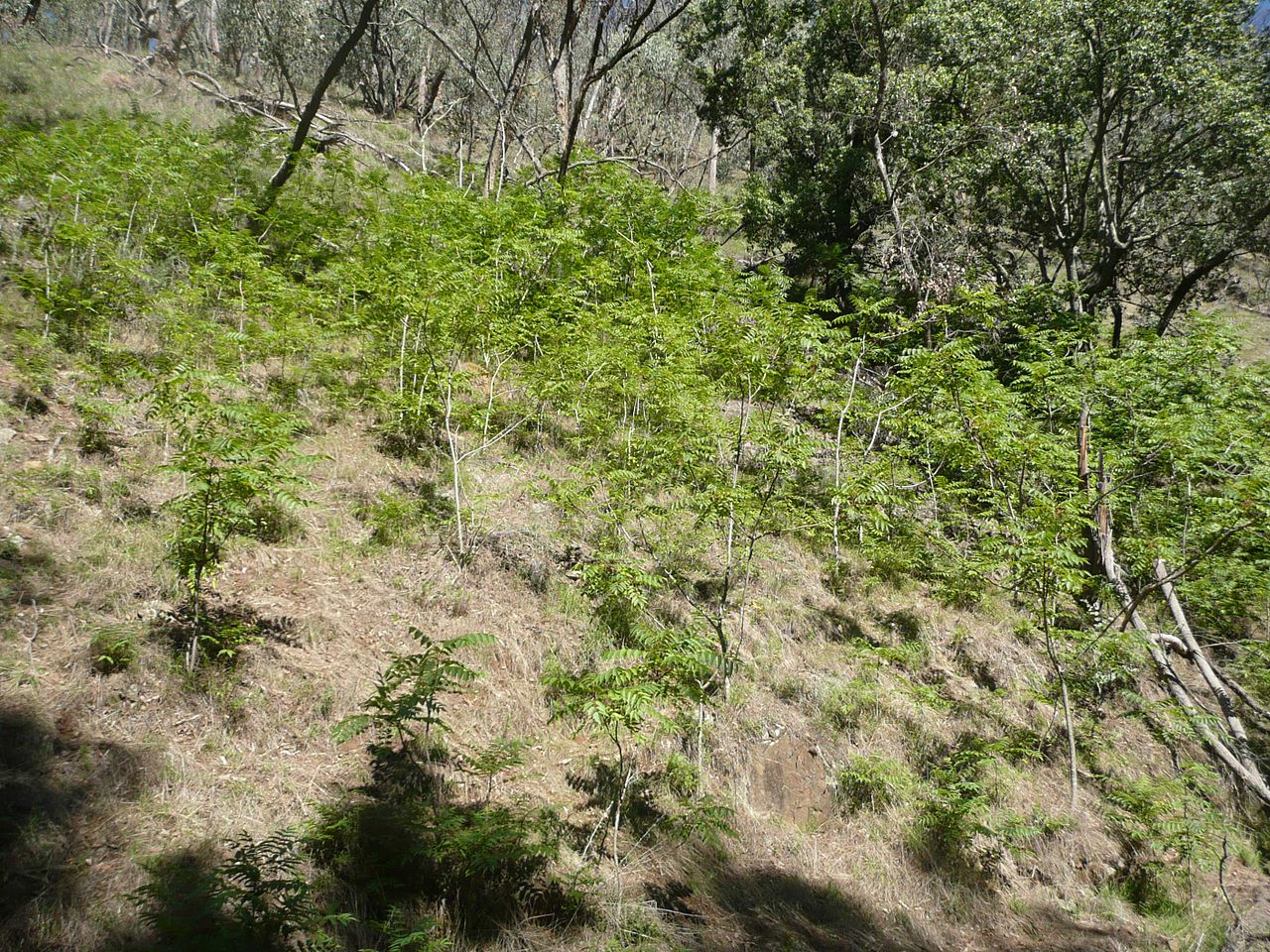Harmful Species
In this section you can find an overview and contextual Information on the targeted pests and pathogen systems covered by the EMPHASIS project. The information is intended to provide farmers, foresters, nurseries and other interested audience with up-to date introductory knowledge on the characteristics, appearance and environment conditions of the harmful species. The threats, consequences and respective contra measures based on EMPHASIS outcomes are presented in the next section “Threats and consequences”.
Puccinia spp. on wheat
Puccinia spp. (stem rust of wheat and other cereals): this fungal disease is indigenous in many parts of Europe and it is rare for serious epidemics to occur, probably because generally lower temperatures limiting the number of cycles the pathogen can achieve in a season. However, the predictions for climate change render this organism a potential emerging threat to European wheat production: in fact, in 2013, stem rust reached epidemic levels in Germany causing significant losses. While major efforts are ongoing in many parts of the world to breed resistant varieties, European elite material is rarely screened against this organism, and potentially popular varieties could be at risk. EMPHASIS early action on detection within WP2 (sentinel crops) and identification of resistance sources within WP3 provide the mechanism for avoiding significant impacts on production potential.
Aphids
Aphids have the potential to cause major economic problems in most cereal crops through removal of sap, transmission of viruses and deposition of honeydew. There are no accurate figures on insecticide usage aimed specifically at aphid control, except in UK, where according to the pesticide usage statistics18, approximately £2.5 million hectares of cereals are treated with pyrethroid insecticides (seed treatment plus sprays). It has been estimated in UK that average infestations can give a potential (without control) economic loss of £70 million, with severe, widespread infestations of wheat alone potentially resulting in losses of £120 million. Increasing resistance to many insecticides is causing control problems. Populations resistant to neonicotinoids occur in parts of southern Europe and with resistance to pyrethroids and the current ban on the use of neonicotinoids, options for control of aphids are very limited. EMPHASIS will investigate within WP3 biological control strategies of aphids on wheat based on use of endogenous entomopathogenic fungi.
Mycosphaerella graminicola
(Septoria tritici blotch - STB) is the main foliar fungal disease of wheat, present in most wheat-growing areas worldwide. The disease is clonally propagated among wheat plants during the growing season by pycnidiospores, which are splash-dispersed upwards over short distances. The progress rate of the epidemic and then the final disease severity are determined by the number of asexual, embedded infection cycles completed by the pathogen, depending mostly on temperature and rain events. Primary inoculum and the early stages of STB epidemics are still not fully understood and deserve attention for improving management strategies
Leptosphaeria maculans
Is a fungal disease agent of stem canker on oilseed rape (OSR), which causes losses throughout Europe, amounting to greater than 20% seed yield if uncontrolled. Use of fungicides is usually only partially effective due to difficulties with timing, and resistance genes are used in breeding programmes to prevent systemic movement of the organism to the stem base. Major gene resistances are very effective, but changes in the organism have led to erosion of their effectiveness. This provides an example of an indigenous and established disease where emergent pathotypes have the potential to cause significant and rapid loss of a major control element. Oilseed rape and wheat are two crops of major importance for domestic and industrial uses in Northern Europe. They are often used in rotations in agronomical practices. Both M. graminicola and L. maculans are characterized by the importance of crop debris in their fungal life cycle. They are two very interesting targets for conventional control methods based on sustainable use of pesticides (efficient for a whole rotation at the agrosystem scale) or more innovative methods based on discovery and exploitation of other micro-organisms competing with L. maculans and M. graminicola for nutrient sources, inhibiting its sexual reproduction or directly toxic for the fungi during the saprophytic stages. EMPHASIS will target L. maculans for early action on detection within WP2 (sentinel crops). In WP3 both fungal diseases L. maculans and M. graminicola will be targeted for the wheat – OSR rotation: biological control agents (microbes) will be screened concomitantly on both wheat and OSR debris to develop methods for fungal disease management (including optimized use of chemicals and debris management) for a whole rotation at the agrosystem scale.
Seedlings insects
(Psylliodes chrysocephala, Phyllotreta nemorum, Delia radicum, Agriotes lineatus) are among the most important pest threatening OSR. In all European countries >85% of OSR area was seeded with neonicotinoids treated seeds (Germany, Latvia, Finland use close to 100% treated seeds). Seed treatment (ST) is the most effective way to apply selective insecticides to crops and target specific (pest and virus) threats. The post-emergent spraying insecticides of crops is less effective, less targeted and requires 2-3 treatments. Hence this is more costly to the farmer, and has a greater impact on the environment. The temporary ban on 3 neonicotinoid insecticides as seed treatment will impact the future development of IPM for OSR and other field crops. EMPHASIS will investigate potential alternative seedling methods for the management of seedling insects (BCAs, cultural approaches, chemicals) and develop a preventative and safe strategies for honey bees and oilseed growers.
Bemisia tabaci and associated viruses
Bemisia tabaci is an obligate phloem-feeding pest, which is globally distributed. Bemisia tabaci is listed on the EPPO A2 list and EPPO recommends its member countries regulate the pest as quarantine. Only a few EU Member States, (UK, Finland, Ireland, Sweden and certain areas of Portugal) remain free of B. tabaci and maintain ‘Protective Zone’ status against this pest. The cost of maintaining protective zones varies; in Finland, over the period 2000-2007, costs were estimated at €1,261,409, including eradication and monitoring survey costs21. Because B. tabaci is acquiring resistance to pesticides and because of the retrieval of pesticides from the European market, the development of novel control methods for this pest based on biological control agents within EMPHASIS WP3 (predatory bugs, endogenous entomopathogenic fungi) will benefit European agriculture.
Peronospora belbahrii
Various species of downy mildew can cause complete loss of high value crops such as basil and salad rocket. These organisms are relatively recent emerging threats in some countries, and provide examples of where small area but high value crops, often critical to horticultural economies, can be devastated. Relatively low disease incidence can reduce quality at the point of sale such that crops are rejected by retailers. Detecting early inoculum in the growing environment through seed, soil or air spora testing within EMPHASIS WP2 (sentinel crops for Peronospora belbahrii, LAMP assay for seed detection, metagenomic approach for airborne inoculum) will provide growers with the best opportunity to take preventative action. Within WP3 better understanding of the range of disease resistance available in the limited range of commercial material that is usual in such crops will provide information to breeding industry. Growers participating in WP4 validation activities will adopt IPM protocols based on combined use of chemical, biological
Soil-borne diseases
(Fusarium wilt agents, Rhizoctonia solani, Pythium spp., Meloidogyne spp., Sclerotium cepivorum) cause serious losses in vegetable crops from the initial stages, at the nursery level, of the production process up to harvest. Vegetable crops are particularly exposed to the risk of diseases as a consequence of their dynamism, the wide range of products, continual innovation in procedures or in products and the use of intensive cultivation techniques. After the phase out of methyl bromide, a very effective soil fumigant, some phytopathological problems became difficult to be managed. The new regulatory framework together with the requirements driven by market and consumer trends, have prompted the need to adopt new approaches, based on high quality problem identification and on strategies with lower environmental impact.
Cydia pomonella
(codling moth) is an important pest of apple, pear and walnut in most parts of the world. Damage is caused by the larvae, which burrow into the fruits. Infestations are traditionally managed with pesticide applications directed at the eggs or the hatchling larvae. However, the codling moth has developed resistance to many of these insecticides24. The synthesis of the codling moth’s female sex pheromone led to the development of pheromone-mediated mating disruption. This technique is now becoming an important tool to control the pest. The codling moth sex pheromone is species specific and non-toxic. To increase the uptake of pheromone-based control methods for codling moth by European fruit grower, more reliable and less expensive application technologies are required such as the puffer pheromone technique that will be developed in WP3 and validated on-farm within WP4.
Chalara fraxinea
(Hymenoscyphus pseudoalbidus) (Ash dieback) is the highly fungal invasive species on woody plants in Europe, probably of Asian origin. Since first observation in the 90`s this disease has dramatically reduced Ashe trees in forest stands, river banks and in the countryside25. The effects of the disease have been dramatic. In Lithuania for example the disease caused a decrease of the ash forest area from 53,000 to 38,000 hectares between 2001 and 200926 and in Denmark no ash trees have been planted since the disease became established. The fast spread and the serious damage caused by the disease led to the EU-COST FRAXBACK actions, the NORNEX project (focusing on genomics of the pathogen and on elucidating the genomic background of resistance in surviving ash trees) and other National initiatives testing limited sets of ash tree selections. In synergy with these initiatives, EMPHASIS will bring together all important selections of nursery trees for urban use throughout the EU and test for resistance against Chalara fraxinea. This will be extended for seedlings from selected seed sources from other projects and initiatives mentioned above. Trees will be sampled from test plots in two different countries and tested for resistance. Building on the above mentioned preliminary results and through a close co-operation with the tree nursery sector it will be possible, within the timeframe of the project to provide guidelines for managers of urban green areas which species and cultivars can be used to prevent future losses due to ash dieback disease and to maintain the important role of Fraxinus species and cultivars in the urban infrastructure.
Heterobasidion irregulare; Heterobasidion spp.
The fungus Heterobasidion spp. includes some of the most destructive pathogens of conifers worldwide, with losses estimated at 790 million Euro per year in Europe27. In addition to the native species, the North American H. irregulare was recently discovered in Italy causing significant mortality of pine stands. Based on its observed and potential impact, H. irregulare has been recently included in the EPPO Alert List. EMPHASIS will develop a LAMP assay for detection (WP2), and within WP3 fungi isolated from stumps of oak and pine in mixed stands will be assessed as biological control agents. In addition, a user-friendly operational device will be developed to inform whether stump treatment is necessary and the amount of product needed (optimized use of chemicals).
Ambrosia artemisiifolia
(Common ragweed) is an invasive weed in Europe, native from North America. Its presence is increasing in all the European countries, in both agricultural and non-agricultural areas (in particular along roadsides and in river banks). It is considered an important, noxious weed because of its allergenic properties and its competitiveness with crops. Pollen of flowering plants may cause allergenic reactions (rhinitis) to humans. Common ragweed has become a dominant weed in many arable and vegetable crops, especially in spring sown crops such as maize and sunflowers for which there are currently very few effective control methods. In this regard, an important role has been played by the continuous monocropping, or short rotations, and by the frequent application of weed control strategies (mainly herbicides). Management of A. artemisiifolia in EMPHASIS will focus on efficient control of this weed in summer crops (maize, sunflower) by selective herbicides to reduce its competitive effect and resulting yield losses. In addition mechanical removal during intercropping (in particular on cereal stubble) will favour depletion of seeds in the soil. In non-cultivated areas a combination of chemical (non-persistent broad-spectrum herbicides) and mechanical intervention will be assessed within WP3 and validated within WP4.2.
Ailanthus altissima
Ailanthus altissima (tree of heaven) has spread over a large part of Europe, and it mostly invades forests via roads or trails. As a fast growing tree it tends to create dense pure stands that may have a strong impact on natural biodiversity. It can also be found in agricultural (including horticultural) and domestic habitats. This tree can also invade urban areas, where it can cause damage to buildings and other structures as well as transport networks, including roads, railways, and other constructed hard-surfaced areas. Control of this invasive species is particularly difficult as any disturbance to above ground structures, including cutting, chopping or girdling, promotes production of sprouts that may emerge from the root, the root crown and the stem. Moreover, shoot fragments may produce adventitious shoots and roots. Practical solutions for containment and local eradication will be developed within WP3, including mechanical control (cutting of mature female trees to avoid seed dispersal, manual uprooting of young individuals, repeated cuttings with brush cutters of young individuals, girdling) and optimized use of chemical (spraying of herbicides on cut stumps and basal bark, stem injection of herbicides, foliar spraying of herbicides on plants shorter than 150 cm).
Heracleum spp.
(giant hogweed) is an alien weed introduced from Western Greater Caucasus in temperate Europe. It impacts on ecosystems because it forms dense stands thus reducing biodiversity. In addition it produces phytotoxic sap, that can cause skin burnings. IPM methods based on mechanical removal, and non-persistent broad spectrum chemicals have been developed in WP3 and validated within WP4 in forestry, river sides, road sides and non-agricultural areas on properties of land owners and municipalities.


